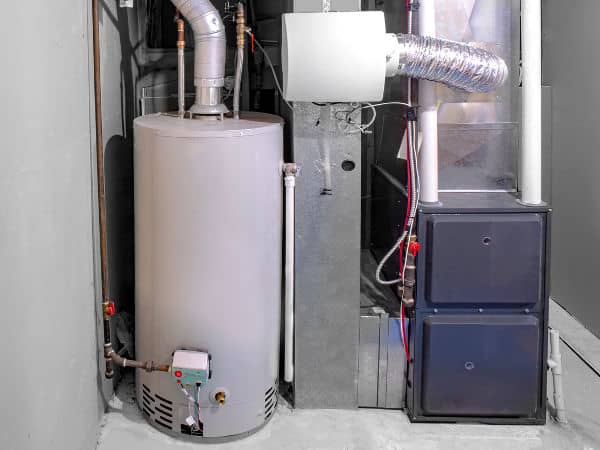Expert Advice on Maintaining Your Home's Hot Water SystemHow to Extend the Lifespan of Your Home's Hot Water System By Maintenance
Expert Advice on Maintaining Your Home's Hot Water SystemHow to Extend the Lifespan of Your Home's Hot Water System By Maintenance
Blog Article
They are making several great pointers related to Tips For Maintaining Your Hot Water Heater as a whole in this content directly below.

Hot water is necessary for day-to-day comfort, whether it's for a refreshing shower or cleaning dishes. To ensure your warm water system runs efficiently and lasts much longer, routine upkeep is essential. This post provides functional pointers and understandings on how to preserve your home's warm water system to stay clear of disruptions and expensive fixings.
Introduction
Preserving your home's warm water system could appear overwhelming, yet with a few simple steps, you can ensure it operates smoothly for many years to find. This guide covers everything from comprehending your hot water system to DIY maintenance tips and recognizing when to call specialist aid.
Value of Keeping Your Warm Water System
Routine upkeep not just prolongs the lifespan of your hot water system yet also ensures it operates effectively. Overlooking maintenance can result in reduced effectiveness, greater power costs, and also early failure of the system.
Indications Your Warm Water System Demands Upkeep
Recognizing when your warm water system requires interest can avoid significant concerns. Keep an eye out for indications such as irregular water temperature level, unusual noises from the heater, or rustic water.
Understanding Your Warm Water System
Before diving into upkeep tasks, it's handy to comprehend the basic parts of your hot water system. Typically, this includes the hot water heater itself, pipes, anode poles, and temperature controls.
Month-to-month Maintenance Tasks
Regular regular monthly checks can help capture minor problems before they intensify.
Flushing the Hot Water Heater
Flushing your hot water heater removes debris buildup, enhancing performance and extending its life.
Monitoring and Replacing Anode Rods
Anode rods prevent deterioration inside the storage tank. Examining and replacing them when broken is critical.
Checking and Changing Temperature Setups
Readjusting the temperature settings makes certain optimum performance and safety.
Do It Yourself Tips for Upkeep
You can carry out several upkeep jobs yourself to maintain your warm water system in top problem.
Checking for Leaks
Frequently inspect pipelines and connections for leakages, as these can lead to water damages and greater expenses.
Examining Pressure Alleviation Valves
Testing the pressure safety valve ensures it works correctly and stops excessive stress buildup.
Protecting Pipelines
Insulating warm water pipes decreases warmth loss and can save power.
When to Call a Professional
While DIY upkeep is advantageous, some problems require expert experience.
Complex Problems Calling For Professional Assistance
Instances include major leakages, electrical issues, or if your hot water heater is consistently underperforming.
Routine Expert Upkeep Benefits
Expert upkeep can consist of comprehensive assessments, tune-ups, and making certain compliance with security criteria.
Conclusion
Routine upkeep of your home's warm water system is essential for efficiency, durability, and expense financial savings. By following these pointers and knowing when to seek professional help, you can guarantee a trustworthy supply of warm water without unexpected disruptions.
How to Maintain an Instant Hot Water Heater
Before tinkering with your hot water heater, make sure that it’s not powered on. You also have to turn off the main circuit breaker and shut off the main gas line to prevent accidents. Also turn off the water valves connected to your unit to prevent water from flowing into and out of the appliance. 2. When you’re done, you have to detach the purge valves’ caps. These look like the letter “T” and are situated on either side of the water valves. Doing so will release any pressure that has accumulated inside the valves while at the same time avoid hot water from shooting out and burning your skin. 3. When the purge valves’ caps are removed, you have to connect your hosing lines to the valves. Your unit should have come with three hoses but if it didn’t, you can purchase these things from any hardware or home repair shops. You can also get them from retail stores that sell water heating systems. Read the user’s manual and follow it to complete this task properly. When the hosing lines are connected, open the purge port’s valves. 4. You should never use harsh chemical cleaners or solutions when cleaning your unit. Make use of white vinegar instead. It should be undiluted and you’ll probably use about 2 gallons. 5. Now flush your water heater. This task should probably take about 40 minutes. We can’t give you specific directions for this because the procedure is carried out depending on the type, model and brand of your heater. With that being said, refer to the user’s manual. 6. When you’re done draining the unit, you have to turn off the purge port valves again. Remove the hosing lines that you earlier installed on each of the water valves. Put the valve caps (purge port) back in their respective places and be very careful so as not to damage the rubber discs that are found inside these caps. 7. Now that everything’s back in place, check your user’s manual again to find out how to reactivate your water heating system. 8. Once it is working, turn one of your hot water faucets on just to let air pass through the heater’s water supply pipes. Leave the tap on until water flows smoothly out of it. https://www.orrplumbing.com/blog/2014/september/how-to-maintain-an-instant-hot-water-heater/

Hopefully you enjoyed reading our piece about How to Maintain Your Water Heater & Prolong its Life. Many thanks for finding the time to read our content. Remember to take the time to distribute this blog post if you appreciated it. Thanks for your time. Revisit us soon.
Call Today Report this page